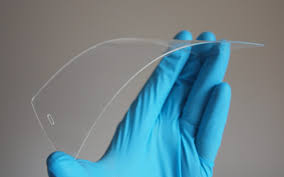
Breaking News
 Mamdani's NYC Tenant Czar Called To 'Seize Private Property,' Calls Home Ownership
Mamdani's NYC Tenant Czar Called To 'Seize Private Property,' Calls Home Ownership
 Trump basks in the glory of his Venezuela raid - but now his allies are reviving a question they...
Trump basks in the glory of his Venezuela raid - but now his allies are reviving a question they...
 Cummings: Deep State Will 'Smash The Absolute Living Sh*t Out of Farage'...
Cummings: Deep State Will 'Smash The Absolute Living Sh*t Out of Farage'...
 Musk & Trump Grab Dinner After Maduro Arrest
Musk & Trump Grab Dinner After Maduro Arrest
Top Tech News
 The First Production All-Solid-State Battery Is Here, And It Promises 5-Minute Charging
The First Production All-Solid-State Battery Is Here, And It Promises 5-Minute Charging
 See inside the tech-topia cities billionaires are betting big on developing...
See inside the tech-topia cities billionaires are betting big on developing...
 Storage doesn't get much cheaper than this
Storage doesn't get much cheaper than this
 Laser weapons go mobile on US Army small vehicles
Laser weapons go mobile on US Army small vehicles
 EngineAI T800: Born to Disrupt! #EngineAI #robotics #newtechnology #newproduct
EngineAI T800: Born to Disrupt! #EngineAI #robotics #newtechnology #newproduct
 This Silicon Anode Breakthrough Could Mark A Turning Point For EV Batteries [Update]
This Silicon Anode Breakthrough Could Mark A Turning Point For EV Batteries [Update]
 Travel gadget promises to dry and iron your clothes – totally hands-free
Travel gadget promises to dry and iron your clothes – totally hands-free
 Perfect Aircrete, Kitchen Ingredients.
Perfect Aircrete, Kitchen Ingredients.
 Futuristic pixel-raising display lets you feel what's onscreen
Futuristic pixel-raising display lets you feel what's onscreen
 Cutting-Edge Facility Generates Pure Water and Hydrogen Fuel from Seawater for Mere Pennies
Cutting-Edge Facility Generates Pure Water and Hydrogen Fuel from Seawater for Mere Pennies
Ultra-thin smartphone touchscreens could be printed like a newspaper

This could see it one day find use in next-generation mobile devices, and because of its incredible thinness and flexibility, could be manufactured at large scale using roll-to-roll (R2R) processing like a printed newspaper.
The breakthrough comes from researchers at RMIT University, who began with a material commonly used in today's mobile touchscreens called indium-tin oxide. This transparent material is highly conductive but does have its shortcomings, chiefly that it is very brittle, so the team sought to give it better pliability by greatly reducing its thickness.
"We've taken an old material and transformed it from the inside to create a new version that's supremely thin and flexible," says lead researcher Dr Torben Daeneke. "You can bend it, you can twist it, and you could make it far more cheaply and efficiently than the slow and expensive way that we currently manufacture touchscreens."



